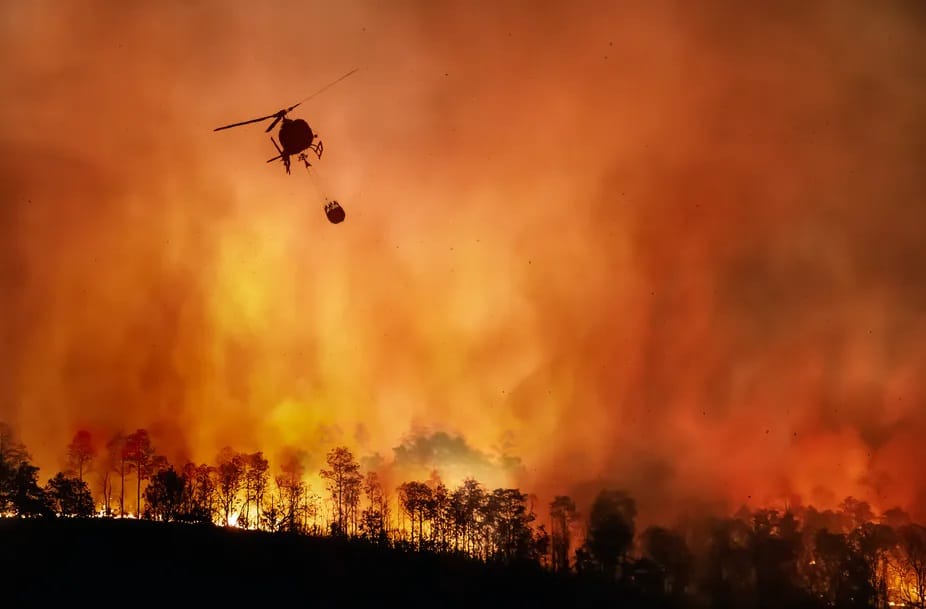The climate change it is an unavoidable reality and its consequences manifest themselves in various ways, one of the most obvious is the rise in sea levels. This phenomenon not only threatens the marine biodiversitybut it also risks redesign the Italian coastswith serious implications for the environment, economy and society.
What is causing sea levels to rise?
The phenomenon of sea level rise is one of the most direct and worrying effects of climate change. There are two main mechanisms through which the heating contributes to this phenomenon: the melting of ice and the thermal expansion of water.
Ice melting
Glaciers and ice sheets, which are mainly found in Greenland and Antarctica, are losing mass at an accelerated rate. This process is highlighted by the frequent news of huge pieces of ice that break off and become icebergs. When these ices melt, the resulting water pours into the oceanscontributing directly to sea level rise. Education Recent studies have shown that the rate of melting in these areas has reached unprecedented levels, overcoming even more predictions pessimistic of scientists.
Climate change: thermal expansion
Water, like many other fluids, expands when its temperature increases. With the heating global, the average temperatures of oceans I am in increase. This heating causes an expansion volumetric of sea water, which, albeit less conspicuous than the melting of the ice, contributes significantly to the rise in the level of the sea. Thermal expansion is responsible for about half of the sea level rise observed in recent decades.
Italy, surrounded by the sea on three sides, is in a particularly vulnerable position with respect to these changes. The implications Of This phenomenon are vast and include the increase in events of floodloss of coastal lands, e the intensification of erosionwhich threaten natural habitats, urban infrastructure and historic sites.

Addressing these mechanisms requires a global commitment to reducing greenhouse gas emissions and mass policies in place adaptation That they can mitigate negative effects on coastal systems and the communities that reside there.
What are the possible solutions?
To combat sea level rise and its devastating effects, it is essential to adopt a strategy that combine there reduction of emissions greenhouse gases with local and global adaptation measures. Here are some of the solutions that could make a difference:
Reduction of greenhouse gas emissions
- Decarbonization of energy: One of the most critical steps is the transition to renewable energy sources such as solar, wind and hydroelectric. Decrease the dependence from fossil fuels not only helps reduce the emissions of CO2but also pushes towards a more economy sustainable and resilient.
- Energy efficiency: Improving energy efficiency in buildings, transport and industry can significantly reduce global emissions. This includes the adoption of technologies cleaner and implementing more rigorous standards for new construction and renovation.
- Policies and regulations: Impose carbon taxes, incentivize green technologies and set legally binding targets for reduction from the emissions they are all tools that can accelerate the transition to a low-emissions future.
Adaptation and resilience
- Coastal barriers: Building sea barriers and retaining walls can help protect areas coastal from erosion and storm surges. These facilities must be designed to be environmentally friendly and to minimize impact on ecosystems marine.
- Restoration of coastal ecosystems: Mangroves, coral reefs and areas humid coastal areas not only offer vital habitats for biodiversity, but they work also by natural defenses against storms and erosion. Theirs restoration and their conservation can significantly contribute to mitigating the effects of rising seas.
- Urban and coastal planning: Adopting planning approaches that take into account sea level rise is essential. That is includes the prohibition of building in high-risk areas and the design of infrastructure capable of withstanding conditions climatic extreme.
- Education and awareness: Informing and engaging the population about the risks associated with climate change and sea level rise is crucial for community resilience. Understanding these phenomena can push people to support stronger environmental policies and adopt more sustainable behaviors.

The application of these solutions requires cooperation international, investments significant and a collective commitment. Every step towards mitigating greenhouse gas emissions and adapting to climate change is a step towards safeguarding our planet and its generations future.
Have you ever thought about how these changes they could affect your life daily or that of your community? Participate to the discussion in the comments below!
#effects #climate #change #sea #rise #Italy
